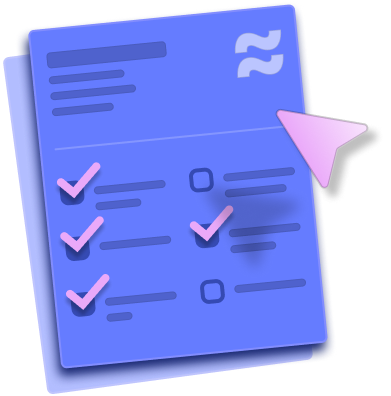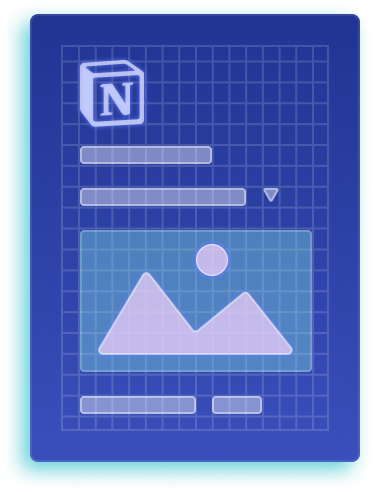
How to Become a Webflow Expert: Tips from a Professional
In the ever-evolving realm of web design and development, Webflow has emerged as a game-changer. Moreover, the demand for Webflow experts has skyrocketed as businesses and individuals seek to harness the full potential of this tool.
Becoming a Webflow expert is not an elusive dream; it's a journey within reach for anyone with the passion and dedication to master this platform.
In this blog, I will share some of the essential tips for becoming a Webflow expert. But before that, feel free to watch the video where I explain how my agency uses Flow Ninja to help businesses grow.
This blog is mainly intended for individuals who are just starting their Webflow journey, but more experienced Webflow users will also find some valuable tips below. Let’s check them out.
{{cta}}
Why Become a Webflow Expert?
Becoming a Webflow expert is a smart choice for several compelling reasons:
- No-code/low-code revolution — Webflow's no-code/low-code approach allows you to build professional websites without extensive coding skills.
- Design freedom — Webflow gives you complete creative control over your web projects.
- Rapid prototyping — Webflow is ideal for quickly transforming ideas into interactive prototypes.
- Efficiency and productivity — It streamlines web design, making you more efficient.
- Client and freelancing opportunities — The growing demand for Webflow experts means more opportunities for freelancers and agencies.
- Future-proofing — Webflow's continued development ensures its relevance in the ever-evolving web industry.
- Community and collaboration — You can connect with a supportive community for learning and collaboration.
- Personal satisfaction — Crafting beautiful, functional websites is deeply rewarding.
The journey to Webflow expertise begins here, with tips and insights from a professional to guide you, whether you're a beginner or an experienced designer looking to expand your horizons.

8 Essential Tips for Becoming a Webflow Expert
The tips below will help you understand what you can expect from Webflow and ultimately decide whether it’s a good fit for you.
These are all things that I had to learn and understand in my Webflow journey, and you can now get them without having to discover each of them on your own.
Start With Web Design and Development Essentials
Before diving into Webflow, it's crucial to have a solid foundation in web design and development. Familiarize yourself with the basics of HTML, CSS, and JavaScript. Understanding these core technologies will make your journey with Webflow smoother, as you'll recognize the underlying principles of web design and development.
I know, you’re probably wondering: but Webflow is a no-code tool! How come I have to learn to code?
Technically, you won’t have to code — at least not in the traditional sense — where you’ll need to understand the logic and create complex algorithms. Instead, knowing HTML and CSS will give you a better understanding of how web development works in the real world, and you will be able to use that knowledge when working with Webflow Designer.
Take heading structure, for example. Designers and developers need to understand what H1, H2, H3, and so on are in order to be able to present content on web pages. Without a basic understanding of the so-called <h> tags, you might be confused with these concepts.
Understanding code is also important to make a website that can perform well and rank well on search engines, but I’ll get to that.
{{cta}}
Immerse Yourself in Free Educational Content about Webflow
The thing I love most about Webflow is that most of its lessons are free of charge and available via Webflow University. It’s a place where I still actively find value, and many of our Webflow experts at Flow Ninja are using the University for reference all the time.
The team behind Webflow really put their heart and soul into creating educational content, including super-engaging videos that cover all the basics and the more advanced stuff.
That said, Webflow University isn’t the only thing you can check out. There’s plenty of community-created content that you might find helpful on your road to becoming a Webflow expert.
Since you’re already on this page, you might as well check other posts on our Flow Ninja blog. Make sure to browse some of the videos from my official YouTube channel, where I often talk about Webflow, design, dev, SEO, and, most importantly, business.
Join the Webflow Community
The Webflow community is becoming stronger with each passing day. Here are some things you can do to become an active community member.
- Join the Webflow forum — The Webflow Forum is a vibrant space where Webflow users gather to share knowledge, ask questions, and provide assistance. Register on the forum and participate in discussions related to Webflow, web design, and development.
- Engage on social media — Follow Webflow on popular social media platforms such as Twitter, LinkedIn, and Facebook. This will inform you about the latest news, updates, and community activities.
- Subscribe to Webflow's YouTube channel — Webflow maintains an active YouTube channel where they upload web design and development tutorials, case studies, and feature highlights. Subscribing to their channel is a great way to stay updated.
- Attend Webflow workshops and webinars — Webflow often hosts workshops and webinars on various topics related to web design, development, and business aspects. These events are excellent opportunities to learn and interact with experts.
- Collaborate and seek feedback — As you work on your Webflow projects, consider sharing your work with the community for feedback. The Webflow community is known for its supportive and constructive feedback culture. Pay close attention to the Made in Webflow section.
- Contribute to the Webflow ecosystem — If you become an advanced Webflow user, consider contributing to the community by creating tutorials, sharing resources, or helping others on the forum. This not only strengthens your expertise but also gives back to the community.
- Attend Webflow meetups — Keep an eye out for local or virtual Webflow meetups in your area. These events provide an opportunity to network with other professionals and enthusiasts.
In my opinion, nobody can become an expert without actually engaging with other people and sharing their knowledge. This is an essential part of growth, and it’s also great business-wise. The more people you meet, the more opportunities you will create.

Understand the Business Aspect of Webflow
As a Webflow agency founder, I have always been focused on the business part. No matter how great a Webflow professional you are, you’ll have to be able to sell your skills and charge for your services. This means understanding the business implications of being a Webflow expert.
For starters, if you are an agency or freelancer, consider how Webflow fits into your service offerings. Assess whether Webflow aligns with the needs of your clients, especially if they require custom design and dynamic content.
Here are some other things to consider:
- Pricing and plans — Study Webflow's pricing structure to choose the right plan for your needs or client projects.
- Case studies and success stories — Review real-world examples of businesses benefiting from Webflow to understand its potential.
- E-commerce and payments — Learn about e-commerce capabilities, payment gateways, and product management.
- SEO and marketing — Explore SEO and marketing tools that complement Webflow for online visibility.
- Security and compliance — Understand Webflow's security and data handling for compliance.
- Webflow hosting — Evaluate hosting options for fast-loading and reliable business websites.
- Client education — Provide clients with training to use and maintain Webflow sites.
- Scale your expertise — Consider offering consultancy services to businesses seeking Webflow solutions.
Understand How Webflow SEO Works
Webflow is a design-focused platform with exceptional development capabilities, but its SEO impact shouldn’t be neglected. As a matter of fact, the popular service has come up with some clever SEO solutions, including fast and easy 301 redirects, auto sitemaps, easy schema editing, and more.
As I advocate the holistic approach to our Webflow clients and their projects, I advise learning the basics of SEO to understand how you can apply it via Webflow. It all comes down to the following three things.
- Understanding SEO — Begin by acquiring a foundational understanding of Search Engine Optimization (SEO). Familiarize yourself with keywords, on-page optimization, backlinks, and search engine algorithms.
- Exploring Webflow — Explore Webflow's built-in SEO tools, such as meta tags, alt text, and schema markup. Understand how to optimize your website's structure and content to make it search engine-friendly.
- Learning about additional tools — Familiarize yourself with tools like Google Analytics and Google Search Console to track your website's performance. Monitor traffic, keyword rankings, and user behavior to make data-driven decisions.
Webflow’s optimization capabilities have become so popular that many Webflow agencies started on SEO.

{{cta}}
Stay up to Date with the Latest Webflow Updates
Staying up to date with the latest Webflow updates is essential to ensure you are leveraging the platform's newest features and improvements.
Webflow maintains an official blog that announces major updates and provides in-depth insights into new features. Subscribe to their newsletter to receive these updates directly in your inbox.
Of course, it’s important to embrace a learning mindset, as technology and tools like Webflow are continually evolving. Be prepared to adapt your skills and strategies as new updates are rolled out.
Learn the Accompanying Tools
Knowing Webflow alone won’t cut it. It’s important to understand other tools that are often used hand-in-hand with Webflow. Here are some of them.
- Figma — Figma is probably the most used tool by Webflow experts, especially those focusing on design.
- Google Docs & Sheets — Like it or not, there will be plenty of documentation, reports, and other data to be shared with clients, and you should be able to present those and work on them collaboratively with clients. Internally, we use Notion, but Google’s suite of tools is free and equally powerful.
- Trello — Using Trello or any other project management tool is essential if you’re working on bigger projects that require more people and organized processes.
- Slack — Continuous communication with clients wouldn’t be possible without comprehensive solutions such as Slack, which has become an industry standard around the globe.
- SEMRush — If you tackle SEO and content marketing strategies, SEMRush is the most powerful tool.
- Hotjar — Hotjar lets you understand your visitors and how they’re moving through your web pages by providing heatmaps.
- Google Analytics — I already mentioned it in the SEO part, but Google Analytics is a really powerful tool that can tell you a lot about your visitors. If you find it difficult to set up and use, there’s an easier alternative called Data Goat, which can be accessed as a Webflow app directly from your Designer interface for free.

Choose Your Area of Expertise
Webflow expert is a broad term, and that’s why I always encourage everyone to master one part of Webflow.
Take the time to explore the various components of Webflow's ecosystem. This includes design, development, e-commerce, SEO, content management, and more. Understand the capabilities and potential areas for specialization.
After that, conduct a self-assessment to identify your strengths, interests, and passions within the realm of web design and development. Consider your existing skills and what you enjoy doing the most.
Let’s be honest: we’re not going to be able to do all things at the same time and be experts at all.
Internally, we use the term Webflow expert mainly for our Webflow team, which consists of developers and QA experts. They develop sites, migrate them, and integrate various tools for our clients. However, they don’t design, as we have a separate team.
Of course, the designers need to understand the possibilities and limitations of Webflow to come up with the best possible solution for our clients.
We also have SEO and content experts onboard, a marketing team, business developers, sales, and more.
Everyone knows their part, and the one thing they have in common is Webflow.
Final Thoughts: Is Webflow a Tool for You?
Before considering Webflow, you should compare it with other similar tools and see if it is the best fit for you. After that, start by opening a free account and learning the essentials via Webflow University and other free sources.
From there, it’s up to you to decide which part of Webflow you’d like to specialize in. You can either learn to build websites from scratch or focus on creating custom themes and templates for other users. You can also become a Webflow expert and offer your services as a consultant. Alternatively, you can specialize in some aspects of Webflow, such as Webflow SEO, design, content management, or more.
{{cta}}





Free Webflow Launch Checklist
After working on 200+ Webflow projects, we've compiled a checklist to use before launching your site.
.png)

.png)

in mind?
Talk with our team and learn how your ideas can become digital experiences.

.svg)





.webp)










.png)
.png)










.svg)

.png)
.png)
.webp)
.svg)


